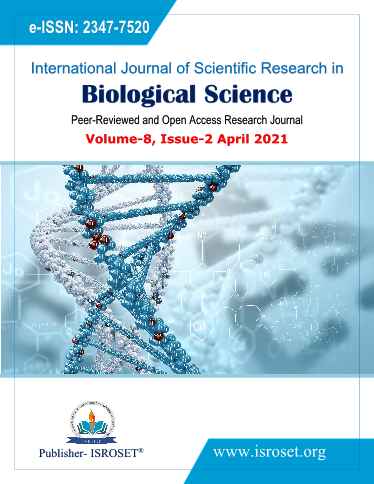Eco-Friendly Management of Allopeas clavulinum (spike awl snail) Through the Application of Herbal Pesticide
Keywords:
Herbal Pesticide, Allopeas clavulinum, Prosopis cineraria, BiocontrolAbstract
The Allopeas clavulinum (spike awl snail) is a mud loving garden and nursery inhabiting mollusc which is very harmful for seedlings of plants as well as a vector for some parasitic helminths. Keeping in the mind the hazardous effect of synthetic chemical pesticides, some plants were screened for their eco-friendly pesticidal effect. The Leaf extract of Prosopis cineraria was found very effective for the eco-friendly management of these harmful snails.
References
Bank, R. , “Classification of the Recent terrestrial Gastropoda of the World”. Last update: July 16th, 2017, World Register of Marine Species, pp134-136, 2017
Yii CY. “Clinical observations on eosinophilic meningitis and meningoencephalitis caused by Angiostrongylus cantonensis in Taiwan”. Am. J. Trop. Med. Hyg. vol 25(2) pp233–249, 1976
Shruti Ojha, Mamta Goyal, Deepika Chittoriya, “Efficacy of Ocimum Sanctum against Alternaria Causing Diseases on Medicinal Plants”. International Journal of Scientific Research in Biological Sciences ,Vol.8, Issue.1, pp.60-64, 2021
Ritter L, Solomon KR, and Forget J, Stemeroff M, and O`Leary C. “Persistent organic pollutants: An Assessment Report on: DDT, Aldrin, Dieldrin, Endrin, Chlordane, Heptachlor, Hexachlorobenzene, Mirex, Toxaphene, Polychlorinated Biphenyls, Dioxins and Furans”. Prepared for The International Programme on Chemical Safety (IPCS), within the framework of the Inter-Organization Programme for the Sound Management of Chemicals (IOMC), Dec,pp 01-149,1995
Akanksha Tripathi, Neha Singh, Markandey Misra, Himanshu D. Dwivedi and N.K.Dubey. “An earth-friendly herbal pesticide from Pongamia pinnata L.”, Current Botany, vol 3(2) pp 01-02, 2012
Downloads
Published
How to Cite
Issue
Section
License

This work is licensed under a Creative Commons Attribution 4.0 International License.
Authors contributing to this journal agree to publish their articles under the Creative Commons Attribution 4.0 International License, allowing third parties to share their work (copy, distribute, transmit) and to adapt it, under the condition that the authors are given credit and that in the event of reuse or distribution, the terms of this license are made clear.







